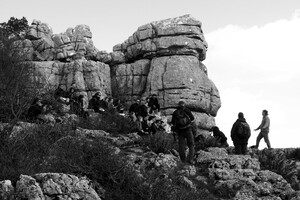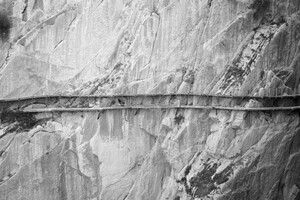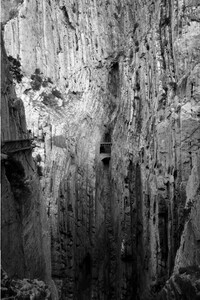I’ve just got back from assisting with our 2nd year field-course to El Chorro, near Malaga in Spain. The format consists of a couple of days of site visits interspersed with group and individual project work. On project work days students conducted projects on geomorphology, geology and ecology, including studying some of the exposed geological sections, tafoni and related erosional landforms, controlling factors on vegetation and soil types, and “bad-land” soil and geomorphology. Others still made studies of river flow dynamics and landslide hazards. On site visits we had to opportunity to visit many of the large dams that define the areas economy, as well as my personal highlight, a visit to the Caminito del Rey, a now preserved ramshackle path made around the turn of the last century from concrete, railway sleepers and tracks, perched perilously above one of the deepest and steepest gorges in the region. Originally built out of necessity for the dam building projects in the area, it later became a playground for adventurers, attempting to traverse the increasingly dangerous path. It is now restored and preserved and tourists can enjoy a walk along the entire length of the path. We also visited the limestone plateaux at El Parque Torcal, which features some limestone features that could be taken directly from a textbook!


Whilst we had some personal time we also made a visit to The Cave of Ardales, which features hundreds of examples of prehistoric cave art, including numerous depictions of animals, as well as rare negative hand impressions (manos negativos) made by blowing paint from a cup, using a tube, over a hand placed on a wall. Some of the art is dated at well over 20,000 years B.P. and the guided, small group tour led by a knowledgeable local volunteer was really special.

From a technical point of view: most notably, the students got their hands on the M9 River Surveyor and a Leica TS06 Total Station, and at the other end of technological sophistication, the constant-head infiltrometers I made a few weeks ago (blog post to follow)! Unfortunately our 3DR Solo survey drone didn’t get an outing as the weather was very windy for the duration of our visit.